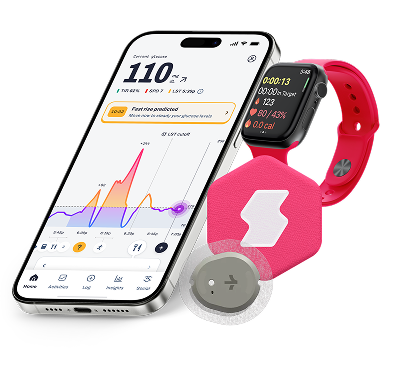Fish, often hailed for its numerous health benefits, also holds significance in terms of glycemic index (GI). While commonly overlooked in discussions about GI, fish can play a pivotal role in managing blood sugar levels due to its protein-rich composition and minimal carbohydrates.
Most fish varieties have a negligible glycemic impact, making them an excellent choice for individuals monitoring their glycemic response.¹ Additionally, the omega-3 fatty acids abundant in fish contribute to overall cardiovascular health, further emphasizing its importance beyond glycemic considerations. This article aims to elucidate the nuanced relationship between fish consumption and glycemic control, providing valuable insights for individuals seeking to optimize their dietary choices for metabolic health.
Sign up to be the first to know about special offers and exciting Signos news.
Glycemic Index Table
According to the USDA, 100g of cod contains approximately 0g of carbohydrates.² Since carbohydrates are a primary determinant of the glycemic index, cod has an exceptionally low GI. Therefore, cod's GI would likely be very low, if not negligible.
Given that cod contains no carbohydrates per serving, its glycemic load (GL) would also be negligible. The glycemic load is calculated by multiplying the glycemic index by the amount of carbohydrates in a standard serving and dividing by 100. However, since there are no carbohydrates in cod, its glycemic load would be close to zero.
This information underscores the importance of fish, particularly low-carbohydrate varieties like cod, in managing blood sugar levels and overall metabolic health.

Nutritional Facts
Fish is a nutrient-dense food, rich in high-quality protein, omega-3 fatty acids, vitamins, and minerals. It is particularly notable for its abundance of essential nutrients like vitamin D, iodine, selenium, and various B vitamins. For example, a 100g serving of cooked Atlantic salmon provides approximately 25g of protein, 13g of fat (including omega-3 fatty acids), and significant amounts of vitamin D and B vitamins.² This nutritional profile makes fish a valuable component of a balanced diet, offering numerous health benefits.
The nutritional information below is for 100 g of cooked Atlantic salmon.²
Nutritional Facts

Is Fish Good for Weight Loss?
Fish can be a valuable addition to a weight loss diet due to its high protein content and low-calorie profile. Protein is known to increase feelings of fullness and promote satiety, which can help reduce overall calorie intake and support weight loss efforts. Additionally, fish is generally lower in saturated fat compared to other animal protein sources, making it a heart-healthy option for individuals looking to manage their weight.² Incorporating fish into meals as a lean protein source can contribute to a balanced diet conducive to weight loss and overall health.
Is Fish Good for People Living with Diabetes?
Fish can be a safe and beneficial protein source for individuals with diabetes. Its low glycemic index and high-quality protein content make it an excellent choice for managing blood sugar levels and promoting overall health.
Furthermore, the omega-3 fatty acids found abundantly in fatty fish varieties like salmon and mackerel have been associated with reducing the risk of cardiovascular disease, a common complication of diabetes.³ Incorporating fish into a balanced diet can offer numerous health benefits for individuals with diabetes, including improved glycemic control and reduced risk of complications.
Better health starts here.
Sign up for tips and insights that work for you!
Allergies
Allergies to fish are relatively common and can range from mild to severe reactions. Symptoms may include hives, swelling, difficulty breathing, and even anaphylaxis in severe cases. It's crucial for individuals with fish allergies to carefully read food labels and avoid consuming fish and fish products to prevent adverse reactions. Additionally, cross-contamination in food preparation areas is a concern, emphasizing the importance of awareness and communication in restaurants and food service establishments.

References
References
- The University of Sydney. (2023, May 1). Glycemic Index – Glycemic Index Research and GI News. https://glycemicindex.com/
- USDA FoodData Central. (2019, April 1). Food Details - fish, salmon, Atlantic, wild, cooked, dry heat. https://fdc.nal.usda.gov/fdc-app.html#/food-details/171998/nutrients
- American Diabetes Association. (n.d.). Protein. https://diabetes.org/food-nutrition/reading-food-labels/protein




.svg)
.svg)
.svg)
.svg)
.svg)
.svg)
.svg)
.svg)
